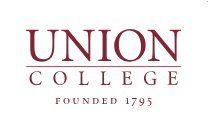About the Project
Project Title: Grassroots Activism and the American Wilderness: Pioneers in the Twentieth Century Adirondack Park Conservation Movement.
• Grant awarded in 2013. Note: Union College is honored to have been awarded funding as a first-time applicant, a rare occurrence.
• Grant period July 2014- May 2016.
Project Scope:
• The John S. Apperson, Jr., Papers (1878-1963) and the Paul A. Schaefer Collection (1908-1996).
• Total size of the unprocessed collections: 210 cubic feet of archival papers.
• Description: Personal papers of John Apperson and Paul Schaefer, Adirondack grassroots environmental activists, mentor and protégé, comprising a century of correspondence, litigation, publications, audio recordings and photographs.
Research Value of the Collections

John S. Apperson Jr., left, and Paul Schaefer, right.
The papers of John S. Apperson and Paul Schaefer held at the Kelly Adirondack Center, Union College, collectively cover nearly 100 years of political activism to conserve the Adirondack Forest Preserve and to expand the Adirondack Park, the largest protected parkland in the contiguous United States. A patchwork of public and privately-held lands, the Adirondacks are and always have been a peopled wilderness. Thus Apperson’s and Schaefer’s papers, which span the years 1899 to 1996, remain particularly pertinent to 21st century conservation issues, wherein social, economic, and environmental concerns so often clash. For as Apperson and Schaefer strove to protect the Park’s fragile environment, they also had to take into consideration the impact of pre-existing as well as emerging commercial, residential, and recreational demands on its resources. Their grassroots efforts and extensive correspondence with both local and national figures provide a wide variety of examples of how such issues were negotiated.
The Apperson and Schaefer papers also reveal the deep connections between activists working on Adirondack preservation and their colleagues moving on the national stage. Ideas and practices forged in the Adirondacks helped shape the political efforts that culminated in the Wilderness Act of 1964, one of the defining moments of modern American environmentalism. More broadly, the collections document a range of dynamics that helped fuel the transformation of Americans’ attitudes toward the environment. These include the evolution of the ideal of wilderness and the efforts to build that ideal into public policy; the opportunities and challenges posed by the evolution of the Adirondacks from playground for the rich in the early 1900s to an accessible and affordable vacation area by midcentury; tensions between resource development, such as dam building, and the preservation of natural landscapes; and the creation of a political constituency for environmental amenities such as health and recreation.
Highlights of the collection include Apperson’s pioneering use of visual imagery to convey the beauty of the Adirondack region and to build political support for its preservation, a strategy later embraced by environmental advocates nationwide; Schaefer’s indefatigable correspondence with other leaders of the national wilderness movement; the organizational records of a constellation of grassroots organizations devoted to Adirondack advocacy; documentation of both of their personal experiences in the Adirondack wilderness that provided the inspiration for their activism.
The Apperson papers were willed by John Apperson to the Forest Preserve Association of New York, Inc. The partially processed papers were later donated to the Adirondack Research Center (now the ARL), which at the time was housed at Special Collections in Schaffer Library at Union College. The Paul Schaefer papers have also been partially processed by Schaefer and his grandson, David Greene, but the bulk of the collection is not accessable. It was Schaefer’s papers and books that formed the early collections held by the ARC. Full processing and cataloguing of the 210-cubic-foot Apperson and Schaefer collections, for many years maintained by volunteers, is a high priority for Union College.
Access to the collections will further the research options for scholars already utilizing collections on the subjects of environmental history and the national conservation movement in institutions including the Library of Congress, the Denver Public Library (which houses the Wilderness Society papers and the Howard Zahniser papers), the Bancroft Library at UC Berkeley, the New York State Archives, and the Adirondack Museum at Blue Mountain Lake.
Subject Guide
About the Project
With gratitude to the Council on Library and Information Resources (CLIR), Union College was awarded a grant to process the papers of two trailblazers in 20th Century conservation activism, John S. Apperson Jr. and Paul Schaefer.
The work of the 18 month project is being conducted at both Schaffer Library and the Kelly Adirondack Center of Union College. The Kelly Adirondack Center is comprised of Paul Schaefer's home, designed and hand built by Schaefer in the 1930s, the Adirondack Research Library, and office space.
A scholarly website with digital exhibits exploring the collections, finding aids, and a digital catalog of over 500 items digitized from the collections is also available.
CLIR Hidden Collections Cataloging Grants
Since 2008, with the support of The Andrew W. Mellon Foundation, the Council on Library and Information Resources has invested in innovative and efficient approaches to describing rare collections through Cataloging Hidden Special Collections and Archives: Building a New Research Environment. A highly competitive program, CLIR funds an average of 15 proposals per grant cycle from applications across the US and Canada.
Thank You to Protect the Adirondacks!
We at Union College’s CLIR Hidden Collections staff would like to extend our gratitude to the work of Protect the Adirondacks! and all its predecessors. Over the past half a century the John S. Apperson and Paul Schaefer collections have passed through the hands of countless devoted custodians. If it were not for the efforts of these enthusiastic volunteers, organizations, friends, and protectors these collections might have been lost to the winds of time.

